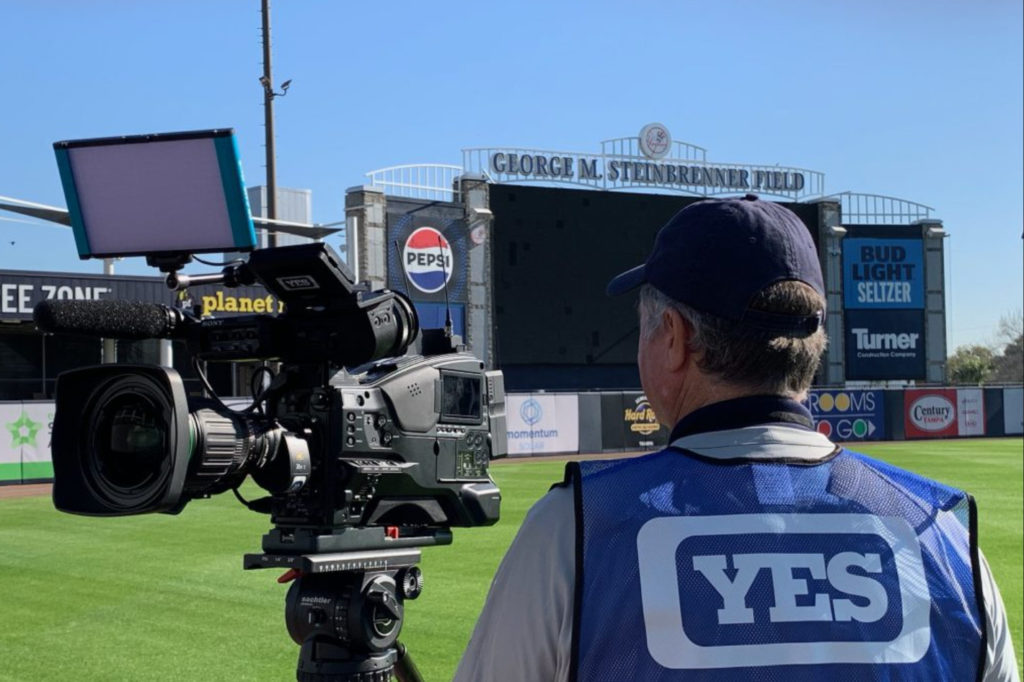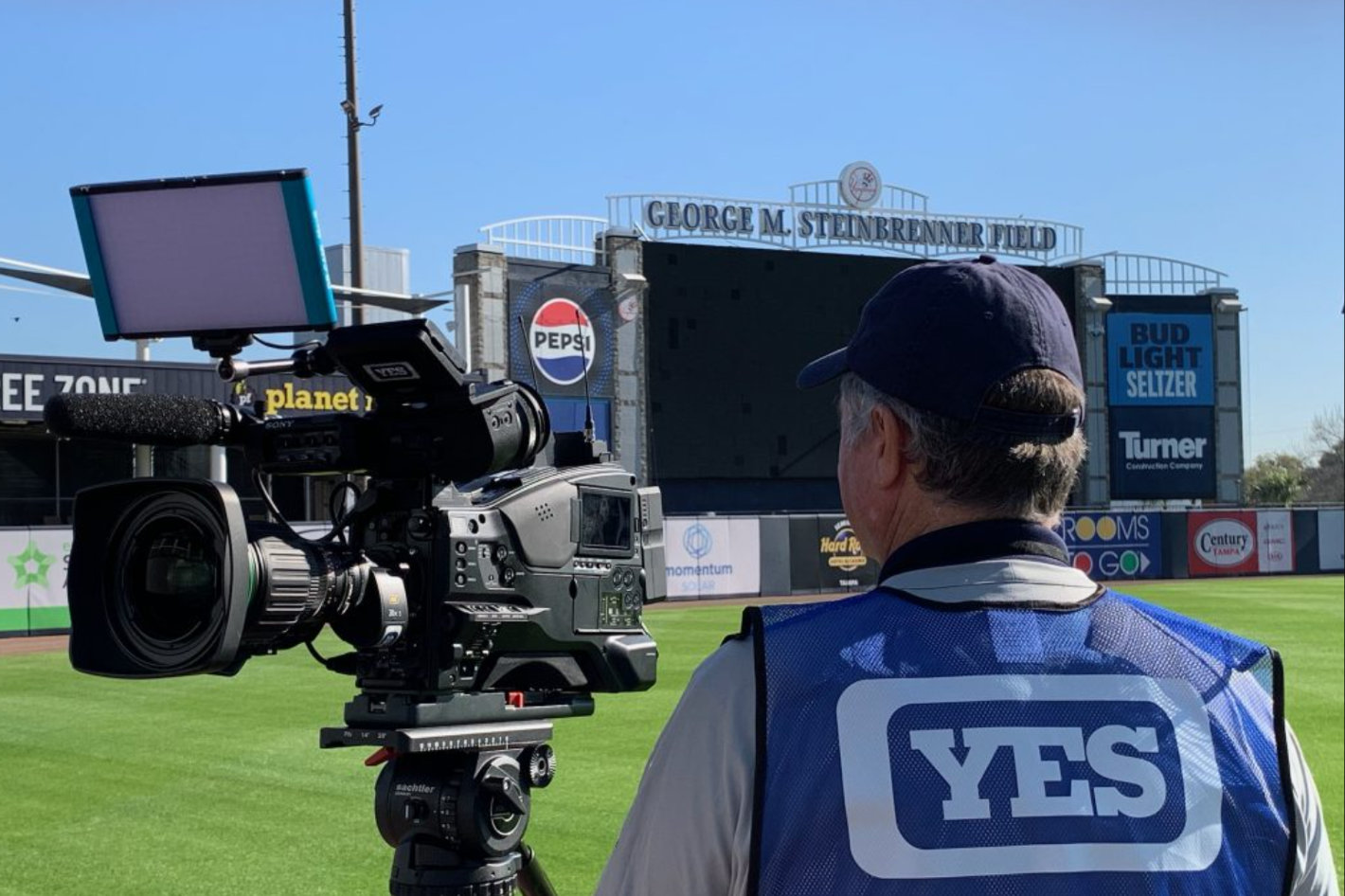 YES uses 4 of Sony’s PXW-Z750 ENG-style cameras to support their broadcasts and cover a variety of events, but they also use 13 of Sony’s HDC-5500 studio cameras to capture the live game action.
YES uses 4 of Sony’s PXW-Z750 ENG-style cameras to support their broadcasts and cover a variety of events, but they also use 13 of Sony’s HDC-5500 studio cameras to capture the live game action.
The Emmy Award-winning YES Network is the most-watched regional sports network and the exclusive regional media home of the New York Yankees (MLB), Brooklyn Nets (NBA), and New York Liberty (WNBA). Core to its mission is enhancing audience engagement, bringing fans closer to their favorite teams, games, and subjects, and adding a new dimension to storytelling. Technology, including Sony’s PXW-Z750 4K shoulder-mount camcorder and DWX wireless audio, lavaliers, and mics have been paramount in helping to deliver on this promise.
Responsible for the network’s day-to-day engineering operations, signal flow, and media asset management, Gavin Hornak, YES’ Senior Director, Broadcast, and IT Systems, plays an integral role in the selection and use of technology and the implementation and maintenance of industry standards and trends. Equipment lifecycle, maintenance, and oversight are essential aspects of his work.
YES uses 4 of Sony’s PXW-Z750 ENG-style cameras to support their broadcasts and cover a variety of events. As Hornak describes it, “The Z750s capture scenic shots of the venue before the game, fan shots during the game, pre-game interviews on the field or court, post-game interviews in the press conference room or locker room – or even field celebrations.” The cameras are also used for pre-recorded and remote events capturing on-air talent from a non-venue location, non-gameday press conferences, and other pre-recorded studio content and specials.
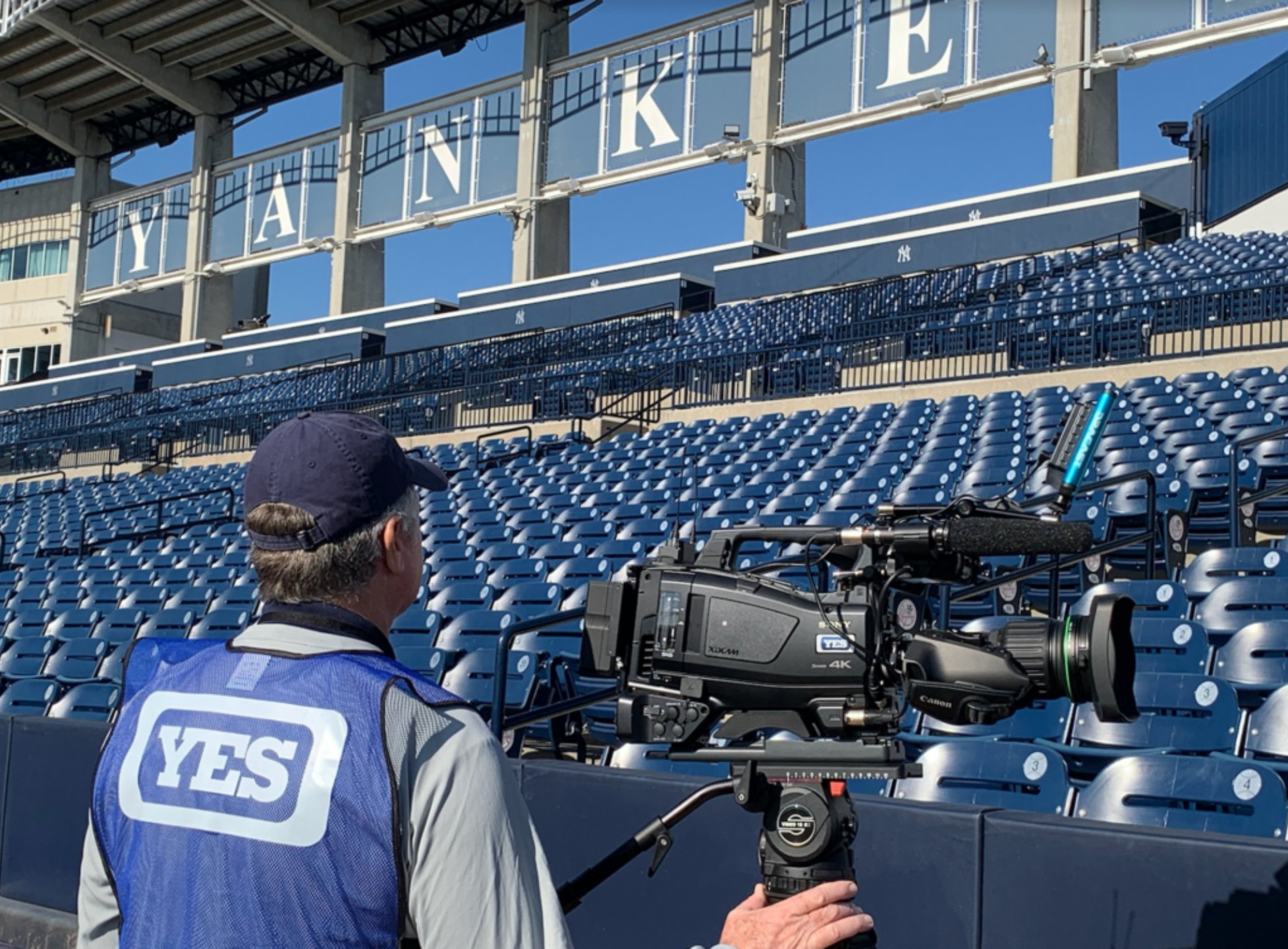 YES standardized on Sony’s cameras
YES standardized on Sony’s cameras
The network also contracts Game Creek Video to provide mobile production services for Yankees, Nets, and Liberty broadcasts. Through this relationship, YES employs 13 of Sony’s HDC-5500 studio cameras, which capture the live game action with high frame rate motion and work seamlessly alongside the Z750s to provide important visual continuity. Hornak notes, “Since migrating to Sony’s Z750 units, we have found that the picture produced by these new handheld ENG-style cameras compliments the picture produced by the HDC-5500 perfectly. The end product produced is indistinguishable between the two cameras, which is crucial for us.”
Besides the color-matching capabilities, YES standardized on Sony’s cameras for numerous reasons. Hornak says, “First, Sony products are always reliable, and equipment used in the field is often put through its paces. The cameras power up very quickly. Additionally, from a maintenance engineering perspective, one of the issues we had before moving to Sony was that our ENG cameras had external audio interfaces. This led to inadvertent damage to the equipment and the potential to lose parts. With the Z750, the microphone receiver is built into the camera head, which not only streamlines but helps maintain equipment health.”
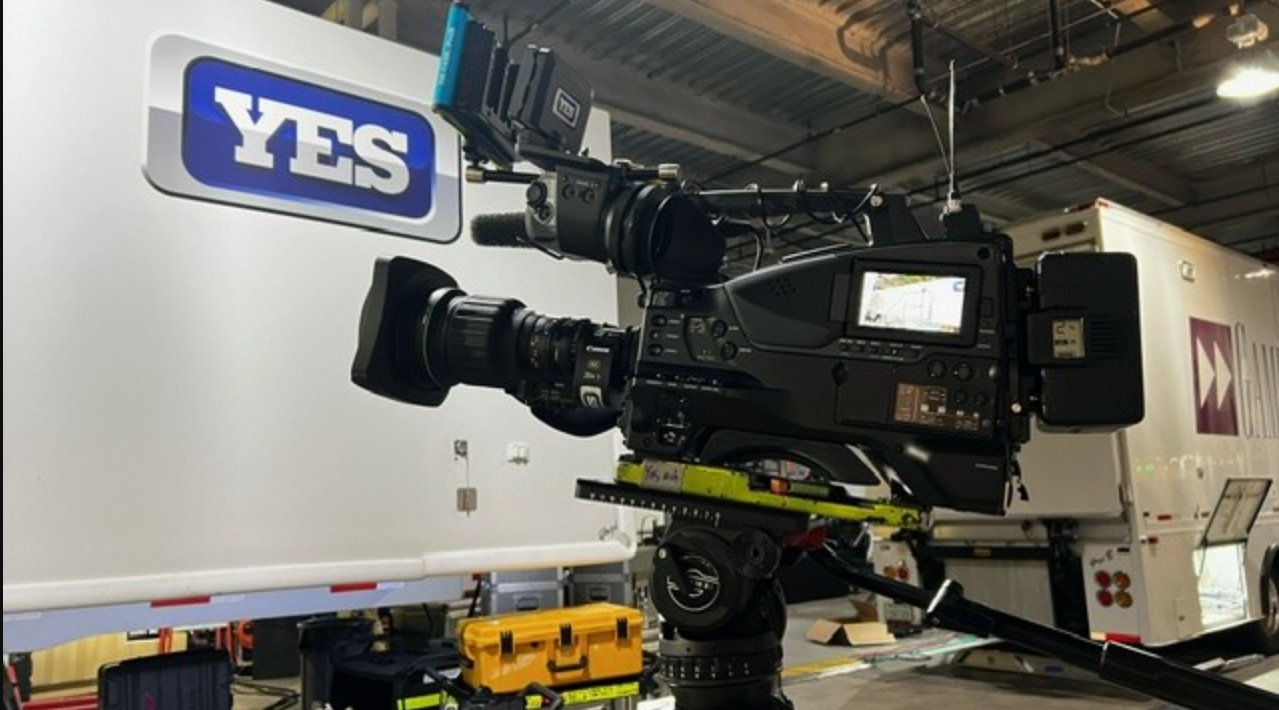
YES uses Sony’s ECM-680S shotgun microphones
Speaking of audio, YES uses Sony’s digital DWR-S03D receiver with their Z750s, which allows them to automatically scan available frequencies and promotes quick and seamless pairing. Hornak explains, “Gone are the days of frequency search and discovery. In congested New York City, where our three teams play their home games, we can access less crowded frequencies. Additionally, the DWR-S03D is a dual receiver unit, and it can perform this function simultaneously for two microphones, communicating channel info with the paired transmitters, which is extremely beneficial.”
Each ENG case is outfitted with Sony’s DWT-B30 lavalier transmitters and DWT-P30 XLR plug-on transmitters. YES also uses Sony’s ECM-680S stereo shotgun microphones for capturing environmental sound, rounding out the network’s robust audio gathering methods and capabilities.
Powered by a 3-chip 4K Global Shutter imager, Hornak finds the cameras to be especially sensitive. “The picture produced by this chip speaks for itself. As we move into a world of UHD and HDR content, this chip assists us in future proofing our broadcasts. With a 3-chip sensor instead of a single chip, we get better sensitivity in low-light environments, resulting in no notable noise. The sensor also reproduces color that mirrors that of the human eye.”
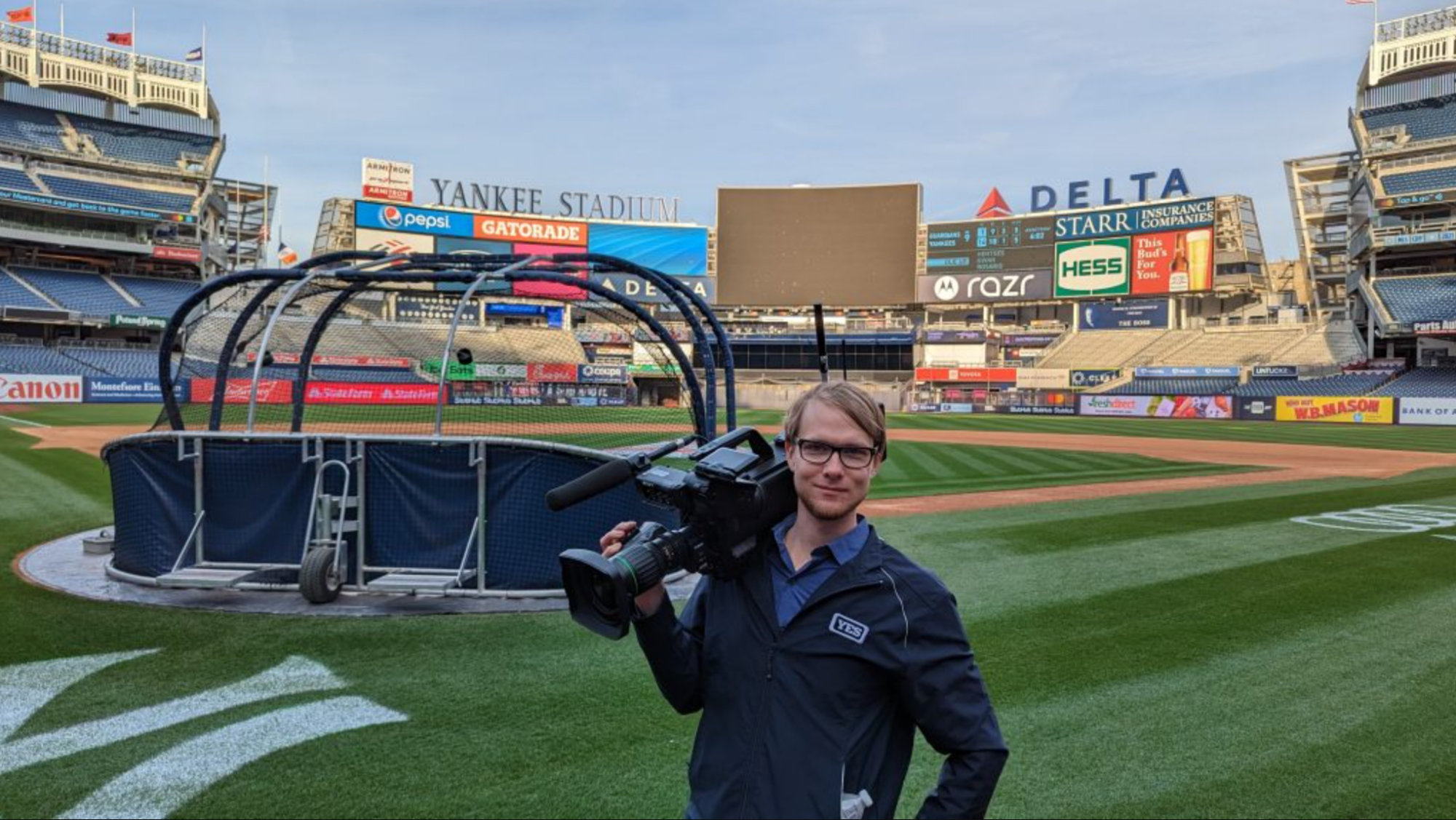 A lighter camera leads to a less fatigued operator
A lighter camera leads to a less fatigued operator
With ENG cameras, weight and ergonomics are top priorities. Hornak finds the camera heads to be extremely light. He states, “Our ENG operators hold this camera throughout the course of a day. A lighter camera leads to a less fatigued operator.”
Another feature of Sony’s Z750 and HDC-5500 cameras that Hornak values is their use of SxS memory cards. He adds, “The nature of the SXS format card allows us to capture on the fly and in unique locations where running a physical cable to a traditional HDC-5500 camera is otherwise impossible on short notice. Additionally, the cards also shine outside of the camera where we can leverage the speed of the cards to offload material in a timely manner. We also frequently complement the Z750 cameras with streaming solutions for expanded live coverage or to expedite pre-recorded content delivery.”
Hornak’s favorite capability of the Z750? The cache recording function adds peace of mind that operators don’t miss the important moments. He says, “Human error and spontaneity being unpredictable elements, cached recording permits commit to a record after the action has already begun. No content is lost!” With Sony’s technology in use, New York’s most passionate sports fans have high-quality access to all of the action.

Filmtools
Filmmakers go-to destination for pre-production, production & post production equipment!
Shop Now